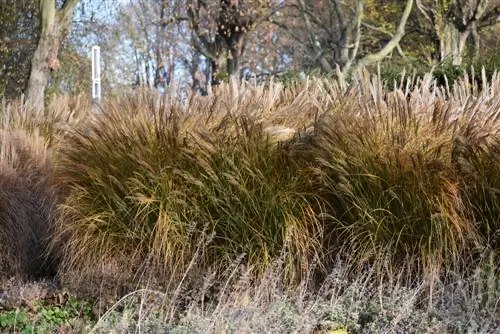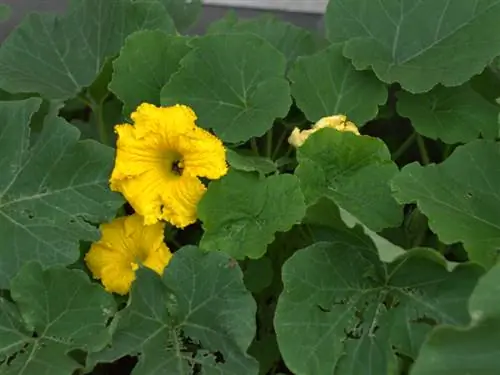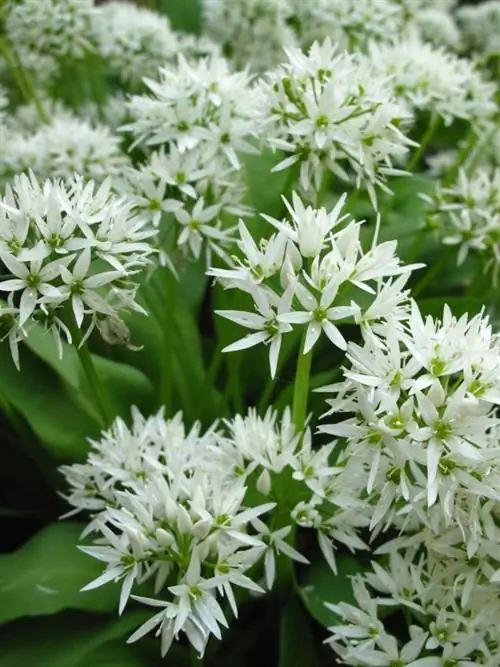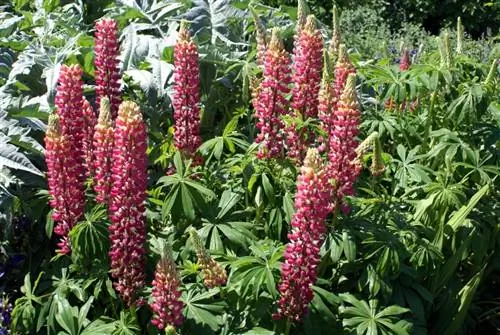- Author admin [email protected].
- Public 2023-12-16 16:46.
- Last modified 2025-01-23 11:22.
Cascading leaves that move gently in the wind, fine flower spikes at an impressive height - miscanthus (bot. Miscanthus sinensis) is really very decorative and also easy to care for. The sweet grass originally comes from East Asia.

How do you properly care for miscanthus?
The care of miscanthus includes a sunny to partially shaded location, fresh to slightly moist soil, spring planting, fertilization if necessary, pruning in spring, propagation by division or rhizomes and winter hardiness. In an ideal location, little care is required.
Location and soil
Most varieties of miscanthus prefer a sunny location, but many also thrive in a partially shaded area of the garden. Ideally, the soil there is fresh to slightly moist. Miscanthus feels very comfortable in a swamp bed or at the edge of a pond.
The Planting
Before planting, you should water your miscanthus well. Then place it in a sufficiently large planting hole so deep that you can cover the roots with soil about eight to ten centimeters high. For rhizome-forming varieties, it is recommended to use a root barrier. It is best to plant miscanthus in spring before it starts to sprout.
Watering and fertilizing
In the first few weeks after planting, you should water your miscanthus regularly, daily or every two days, depending on the weather and temperature. Later, the reeds can survive longer dry periods with only small amounts of water.
Fertilizer is only necessary in poor soil. A dose of complete fertilizer (€47.00 on Amazon) at the beginning of the vegetation phase in spring is usually sufficient. Things look a little different if you plant your miscanthus in a pot. The soil there leaches out more quickly and regular fertilization is recommended.
The pruning
The old stalks and leaves of the miscanthus become dry in autumn, and the reeds then sprout again in spring. It should definitely be cut back beforehand. The best time for this work is around March or April. Pruning in autumn is not recommended.
The Multiplication
The best way to propagate Miscanthus is to divide it. You will have the least effort if you do the division when pruning in the spring. If your miscanthus develops rhizomes, you can cut them off and replant them elsewhere in the garden.
The miscanthus in winter
Miscanthus is considered to be very hardy; frost is less of a problem for it than plenty of moisture from above, so it should not be cut in autumn. The reeds are particularly attractive in winter when the remaining flower spikes are covered in hoarfrost. However, the stalks can break under a heavy snow load if you don't tie them together.
The most important things in brief:
- very easy to care for
- sunny to partially shaded location
- fresh to slightly moist soil
- ideal planting time: in spring before budding
- Propagation by rhizomes or division
Tip
In a sunny, slightly moist location, miscanthus needs (almost) no care.






